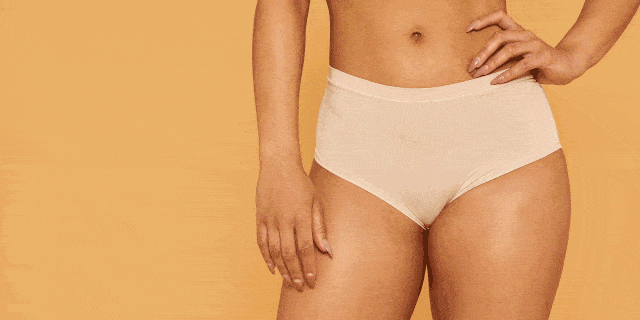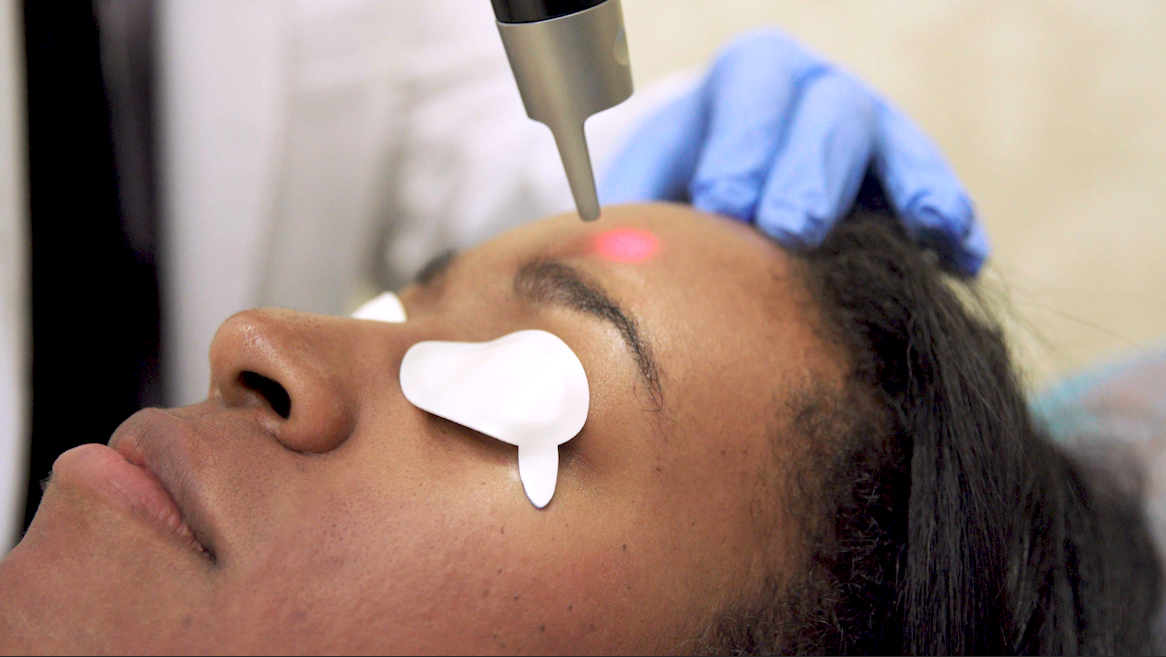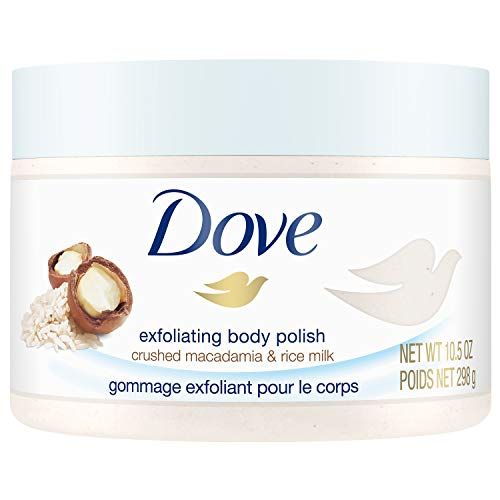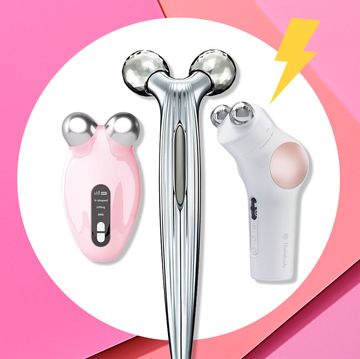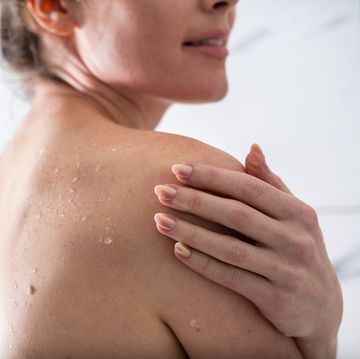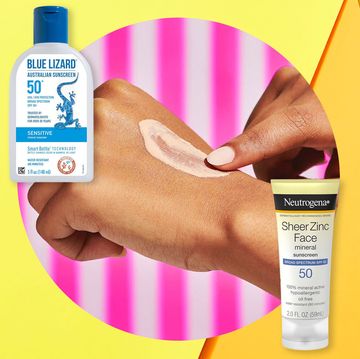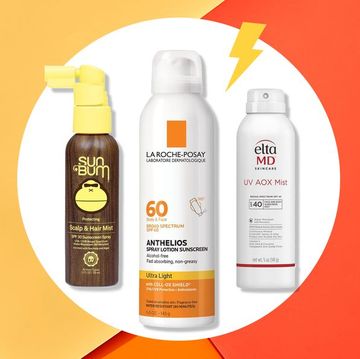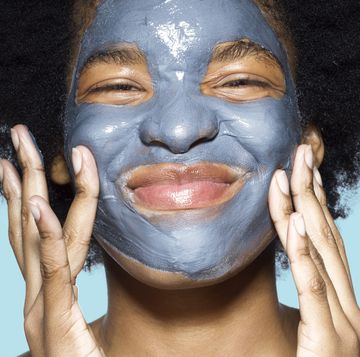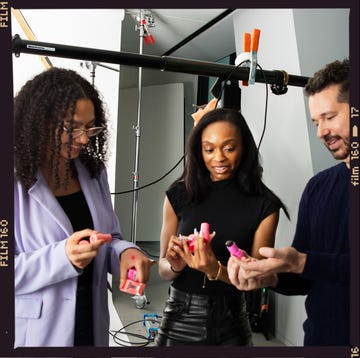Whether it’s on your chin, underarms, or bikini area, there might be some body hair that bothers you and that you wish you could banish for life. Can you do it with laser hair removal? And more importantly, is laser hair removal safe?
Here's the full scoop on laser hair removal: how it works, who it’s good for, and any safety concerns that come along with it.
First things first, here’s how laser hair removal works.
Laser hair removal is the process of using light-based energy to target hair follicles under the skin, which reduces hair growth in the treated area, says Deanne Robinson, MD, president and co-founder of Modern Dermatology of Connecticut.
It should actually be referred to as laser hair reduction, as it does not remove 100 percent of the treated hair in the area. The real number is approximately 80 percent removal if you do a series of treatments.
Despite what you might have heard, it actually can work on all skin tones.
There are a few different types of lasers, and your doctor should ultimately decide which one is best for you to achieve optimal results, says Howard Sobel, MD, dermatologist and founder of Sobel Skin.
The Diode Laser is very effective for light and dark skin tones. The Alexandrite Laser is the fastest of all lasers, and it works best for treating larger body areas on patients who have light-to-olive complexions. The Nd:YAG can be used safely on all skin types, including tanned skin. Keep in mind, it is less effective for light or fine hair when compared to other types of lasers.
And according to Dr. Sobel, the LightSheer DUET High Speed Laser is considered the industry gold standard in laser hair removal. It works on a range of hair and skin tones, including tanned skin, and has been proven to improve the appearance of razor bumps, benign pigmented lesions, sun damage, and superficial leg veins, all in addition to removing hair.
This treatment is only for medium to dark hair colors—sorry blondies.
Laser hair removal targets the pigment within the hair bulb, says Dr. Robinson. Blonde or white hair lacks pigment and is not able to be treated with the lasers that are currently available.
FYI: Laser hair removal is not a one-time deal.
Multiple treatments are usually needed to achieve the best results. Since hair grows in cycles, one treatment will not be able to catch and destroy all hair follicles, says Dr. Sobel.
Most people experience great results after three to five treatments, spaced four to eight weeks apart. It’s hard to predict how different people’s hair will respond—the length and quantity of treatments really depends on the body part you are treating and the individual’s response to the treatment.
To keep it safe, look for goggles and masks.
Eye protection is critical with laser hair removal (just as it is for any laser or light-based procedure) to prevent injury to the eyes, says Dr. Robinson. Both you and the doctor or technician performing the procedure should always have goggles on when the laser is in process.
The other safety concern is exposure to the laser plume (aka the smoke, vapor, and particles released while lasering). The biggest risk is to those who perform the procedure and are exposed to the plumes frequently, says Dr. Sobel. The dust particles are very small and can potentially irritate your airways over time and continual exposure. Any practitioner performing laser hair removal should wear a surgical mask to minimize a potential reaction, but it is not necessary for the patient receiving the treatment.
Learn more about another type of laser treatment here:
Where you go for treatment matters.
The industry is relatively unregulated, so be careful about where get your hair removal done, says Dr. Sobel. It’s best to have a board-certified dermatologist or other licensed laser hair professional do the procedure.
Many medi-spas and salons offer laser hair removal much cheaper than at doctors' offices, but safety should always be your biggest concern. Many of these locations may not use filtration and evacuators (to help with the laser plume), and you do not know the level of training or expertise the technician may or may not have.
Prep like a pro to get the best results.
Before your appointment, you want to avoid anything that involves removing hair from the root, like waxing, plucking or threading. Dr. Robinson suggests shaving the day before your appointment so the laser can focus on the root of your hair without the excess length getting in the way.
Make sure to stop using active ingredients at least five days before your appointment, including glycolic and salicylic acids, benzoyl peroxide, and retinoids, suggest Dr. Sobel. Any medications that are photosensitive should also be stopped at least one week prior to treatment. Check with your doctor if you're unsure.
As for spray-tanning, wait at least a couple of weeks after a spray tan before going in for laser hair removal. Since the laser targets pigment, the excess pigment on the surface of your skin can mess things up. It's best to exfoliate the area post-spray tan to ensure you've removed all traces of tan.
It’s not pain-free, but it's totally tolerable.
When you get laser hair removal, a topical anesthetic can be applied to the area to prevent pain and discomfort. The laser is then moved across the targeted area with a handheld device that treats the area with intense laser pulses. According to Dr. Sobel, it may feel hot or like a rubber band snapping the skin, but most patients are able to tolerate the treatment well.
Take care of your skin post treatment.
Don’t freak out if you see redness, swelling, and bumpiness in the treated area right after—it’s totally normal and usually subsides on its own within 24 hours. You can return to work and other normal activities right after treatment.
One thing to keep in mind: your skin can be extra sensitive to the sun after laser, says Dr. Robinson. Avoid sun exposure on that area for two weeks and if you are outside, make sure to use an SPF on treated spots. You should also avoid lotions (especially ones with fragrance) and self-tanner for 72 hours.
